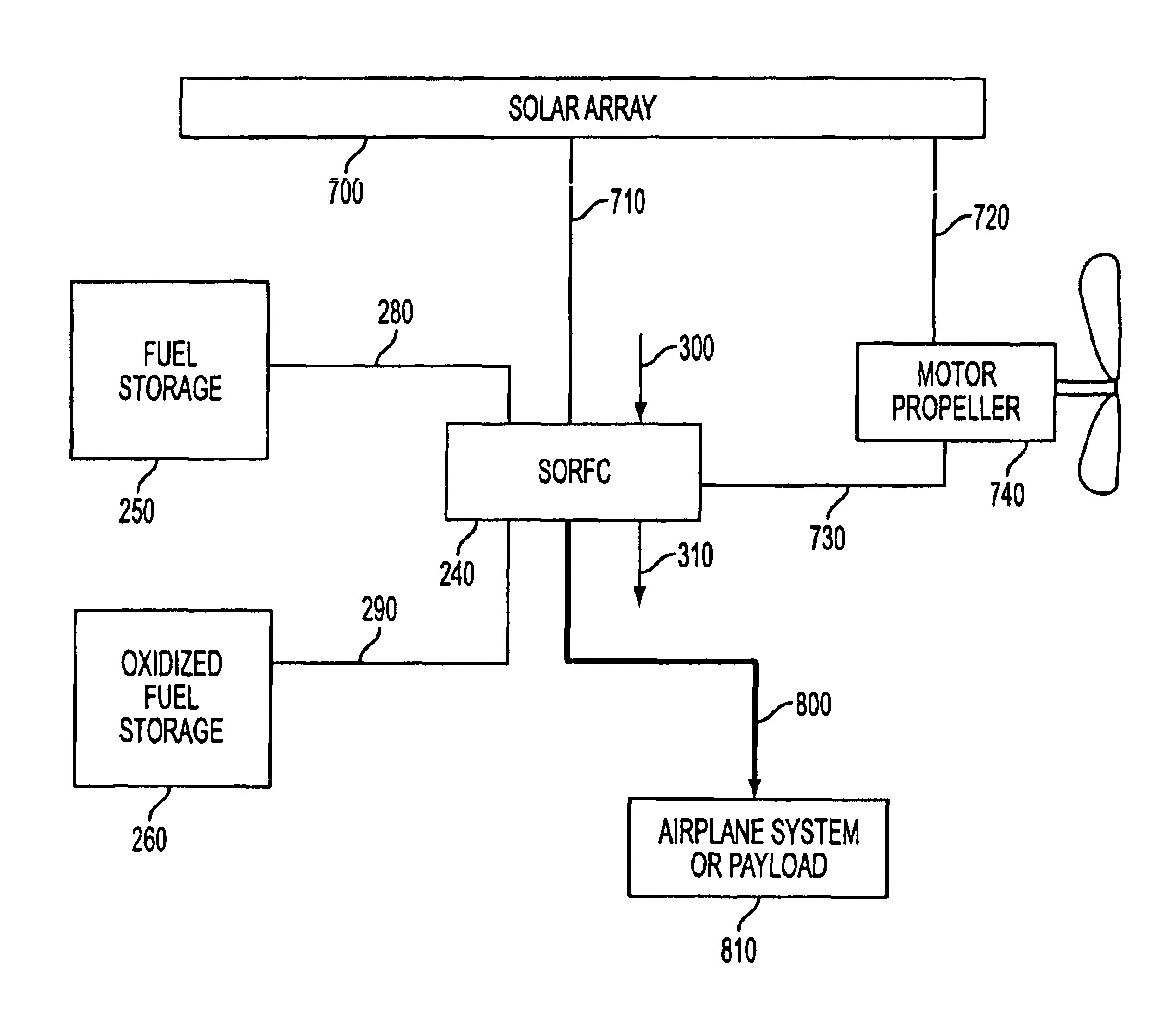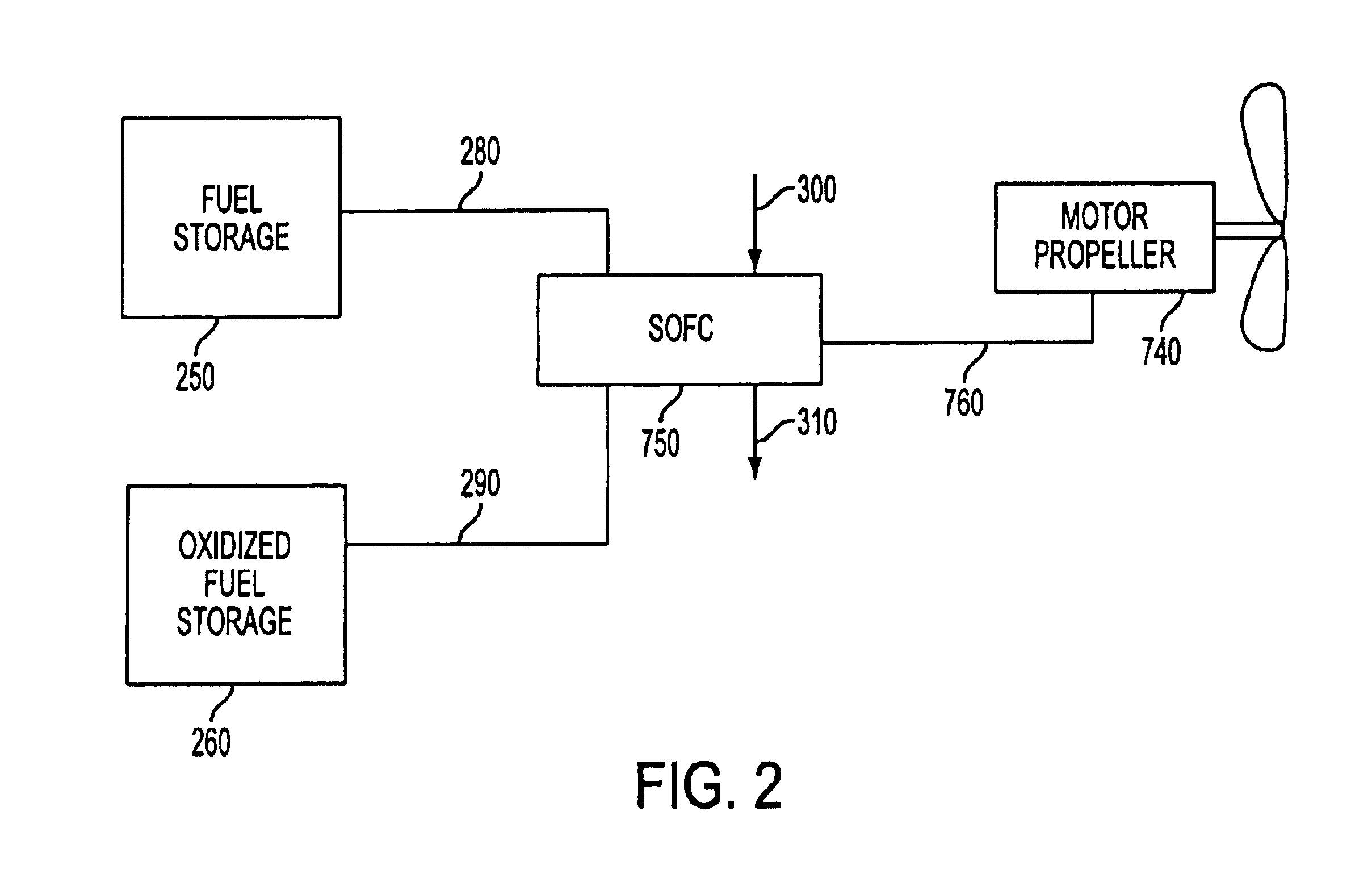Solid oxide regenerative fuel cell for airplane power generation and storage
- Summary
- Abstract
- Description
- Claims
- Application Information
AI Technical Summary
Benefits of technology
Problems solved by technology
Method used
Image
Examples
second preferred embodiment
In a second preferred embodiment of the present invention, a non-regenerative solid oxide fuel cell (SOFC) is used as a primary power source for an airborne vehicle, such as the high altitude unmanned airplane. In this embodiment, all the energy for the airplane comes from fuel carried onboard. For missions of only a few hours to a few days duration, the high-energy conversion efficiency of the SOFC combined with its ability to effectively use the high altitude air as the oxidant makes this approach advantageous.
The use of hydrogen as the fuel is preferred because it allows the airplane to maintain a stealth character as the oxidized fuel (water) is stored and the airplane retains a zero emission status. However, if desired, a conventional hydrocarbon fuel (such as propane) may be used instead if the stealth characteristics are not important in the airplane.
As in the SORFC, the SOFC uses atmospheric air as the source of oxygen oxidant without compromising the stealth. The advantages...
PUM
| Property | Measurement | Unit |
|---|---|---|
| altitude | aaaaa | aaaaa |
| altitude | aaaaa | aaaaa |
| altitude | aaaaa | aaaaa |
Abstract
Description
Claims
Application Information
 Login to View More
Login to View More - R&D
- Intellectual Property
- Life Sciences
- Materials
- Tech Scout
- Unparalleled Data Quality
- Higher Quality Content
- 60% Fewer Hallucinations
Browse by: Latest US Patents, China's latest patents, Technical Efficacy Thesaurus, Application Domain, Technology Topic, Popular Technical Reports.
© 2025 PatSnap. All rights reserved.Legal|Privacy policy|Modern Slavery Act Transparency Statement|Sitemap|About US| Contact US: help@patsnap.com



